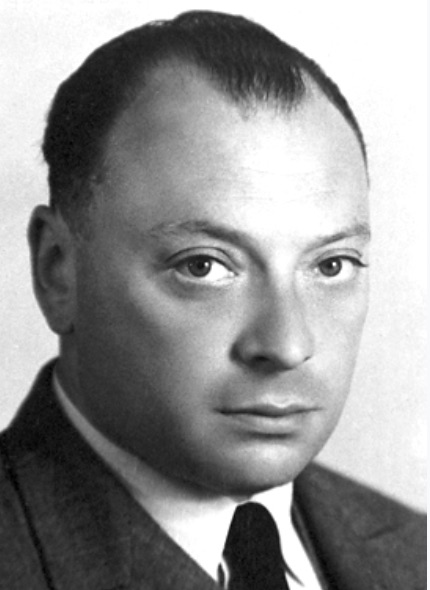
Wolfgang Ernst Pauli was born on April 25, 1900 in Vienna, Austria-Hungary. During his adolescence he attended the Döblinger-Gymnasium in Vienna. Finding the schoolwork unchallenging, he secretly studied Einstein’s papers from under his desk, while pretending to pay attention in class. In spite of his focus on content outside the curriculum, he graduated with distinction in 1918 and entered the Ludwig-Maximilian University of Munich.
Within two months, he published his first paper on Einstein’s Theory of Relativity. Pauli’s brilliance was immediately recognized by his professor Arnold Sommerfeld who encouraged his development. In 1920, Pauli wrote his first paper on quantum physics. At that time Werner Heisenberg, also a student of Sommerfeld, reported on Pauli’s eccentric study habits:
Wolfgang was a typical night bird. He preferred the town, liked to spend evenings in some café, and would thereafter work on his physics with great intensity and great success. To Sommerfeld’s dismay he would therefore rarely attend morning lectures and would not turn up until about noon.
In 1921, Wolfgang Pauli, under the supervision of Sommerfeld, was awarded a Ph.D. for his thesis on the quantum theory of ionized diatomic hydrogen. Within two months after completing his doctorate, Pauli completed a 237-page article on Einstein’s Theory of Relativity, on which Einstein, himself, later commented:
Whoever studies this mature and grandly conceived work might not believe that its author is a twenty-one year old man. One wonders what to admire most, the psychological understanding for the development of ideas, the sureness of mathematical deduction, the profound physical insight, the capacity for lucid, systematical presentation, the knowledge of the literature, the complete treatment of the subject matter, or the sureness of critical appraisal.
In October 1921, Pauli was appointed assistant to physicist Max Born at the University of Göttingen, and the following year went to the Institute for Theoretical Physics in Copenhagen where he met Niels Bohr. Then from 1923 to 1928, he served as a professor at the University of Hamburg. During his time at this university, he struggled with the challenges of quantum physics, stating in a letter to R. Kronig in 1925:
Physics is very muddled again at the moment; it is much too hard for me anyway, and I wish I were a movie comedian or something like that and had never heard anything about physics!
Out of this cognitive struggle, he formulated what is known today as the Pauli Exclusion Principle, asserting that no two electrons (or fermions in general) can simultaneously occupy the same quantum state (i.e., have the same 4 quantum numbers) in a given quantum system. It was this discovery for which he would be awarded a Nobel Prize in 1945.
In 1928, Pauli was appointed Professor of Theoretical Physics at the Federal Institute of Technology Zurich. At a conference in Pasadena on June 16, 1931, Pauli announced that his mathematical theory had led him to the conclude the existence of a new “elementary particle” that he called a “neutrino.” He later stated, “I have done a terrible thing: I have postulated a particle that cannot be detected.” During the 1930’s, he took visiting professorships in America– at the University of Michigan (1931) and the Institute for Advanced Study (1935).
At the outbreak of World War II, Pauli, as a citizen of Austria became automatically, a German citizen. In 1940, he moved to the United States, serving as professor of theoretical physics at the Institute for Advanced Study, but in 1946, after the War ended, he returned to Zürich and in 1949 became a Swiss citizen.
In 1958, shortly after receiving the Max Planck medal, Wolfgang Pauli was diagnosed with pancreatic cancer and hospitalized in a room with number 137. When his research assistant visited him, Pauli asked, “Did you see my room number?” Pauli saw a strange irony in the fact that he had always wondered why the famous “fine-structure constant” of theoretical physics is approximately 1/137. He died in that room on December 15, 1958 at 58 years of age.
